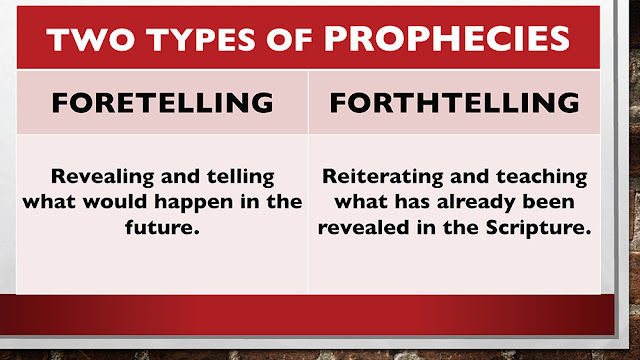A MORE SURE WORD OF PROPHECY (PART III)
By Akin Ojumu
This commentary was inspired by what one of the Prophetic Kingpins in Nigeria shared on his Instagram handle. In the post, the Guru of Prophetic argued that prophecies deliver on two faith systems. These two systems he described as “Faith in God” and “Faith in God’s Prophets.”
Although I’m not particularly hung up on the Prophetic Giant’s assertion that prophecies deliver on two faith systems, I’d be remiss if I failed to use this opportunity to remind you of the Biblical definition of prophecies.
Strictly speaking, prophecies are messages from God. It is God communicating His heart, mind, will, thought, and intention to mankind. To prophesy is to proclaim what God intends to do. The human vessels through whom God’s message is proclaimed are who we call prophets. The gift of prophecy is the ability given by the Holy Spirit to an individual that enables him to proclaim God’s message to others.
Biblically speaking, what a prophet proclaims could either be revelatory aka foretelling (i.e., reveal or foretell what is not already known) or reiterative aka forthtelling (i.e., reiterate what is already known). Prophesying is, therefore, the proclamation of God’s message publicly, and it could either be revelatory or reiterative.
The following passages give us examples of forthtelling prophecy:
1) Nehemiah 8:1-8
2) Luke 4:16-30
3) Luke 24:27
4) Acts 2:14-41
Both the revelatory (foretelling) and reiterative (forthtelling) aspects of prophecy were needed to establish the Church and lay the foundation of the Christian faith.
Ephesians 2:19-20
“So then you are no longer strangers and aliens, but you are fellow citizens with the saints and members of the household of God, built on the foundation of the apostles and prophets, Christ Jesus himself being the cornerstone.”
This foundation of the Christian faith was laid by the Apostles and Prophets of the first century Church who proclaimed God’s message to the people as revealed to them by the Spirit of God. These gifted men prophesied by revelation and reiteration, i.e., they foretold and forthtold.
A good analogy of prophecy is telescope and microscope. Telescopic prophecy is to reveal what isn’t yet known (i.e., foretelling). On the other hand, microscopic prophecy is to reiterate what had already been revealed by teaching what’s written in the Scripture (i.e., forthtelling).
As soon as the foundation of the Christian faith was laid and Scripture was fully written, the revelatory (foretelling) aspect of prophecy ceased. Everything that God wants us to know is already written in Scripture, which is now the sole source of hearing the Word of God.
Thus, the operation of the gift of prophecy in the modern-day era became solely reiterative i.e., forthtelling by proclaiming what had already been revealed as written in the Bible. To prophesy, therefore, in our day is to preach and teach the revealed truth of God as contained in Scripture.
It was this Prophetic Word, i.e., Scripture, that Peter had in mind when he wrote:
2 Peter 1:19
“And we have the prophetic word more fully confirmed, to which you will do well to pay attention as to a lamp shining in a dark place, until the day dawns and the morning star rises in your hearts.”
The context of 2 Peter 1:19 was Peter’s rebuttal of the false allegations levelled against him by detractors who were trying to subvert his apostolic authority by claiming that the Gospel message he was preaching were nothing, but cleverly devised myths.
Now, it’s important to understand that Peter’s enemies were not just trying to discredit him and his message, their real target was the Lord Jesus. Their goal was to make people deny and reject the deity of Christ and His vicarious death.
So, Peter wrote to the Church to remind them that the Gospel message he preached was a firsthand report of events he personally witnessed. To make his point, He gave an account of one of the most profoundly breathtaking events he witnessed, i.e. the Transfiguration of Christ.
2 Peter 1:17-18
“For when he received honor and glory from God the Father, and the voice was borne to him by the Majestic Glory, “This is my beloved Son, with whom I am well pleased, for we were with Him on the holy mountain.””
To Peter, the transfiguration was a powerful personal confirmation of the Old Testament prophecies about the Messiah. The transfiguration represents a glimpse of the glory of the Son of Man which is to be unveiled at His Second Coming.
Peter was there to witness the face of Jesus shine like the sun and His clothes white as light. He saw Jesus standing with Moses and Elijah, as they discussed Jesus’s departure, i.e., His death, resurrection, ascension. Peter heard the voice of God coming down from the Majestic Glory, saying, “This is my Son, my beloved Son, with whom I am well pleased; listen to Him.”
To be continued.



Comments
Post a Comment